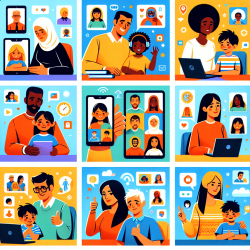The landscape of health disparities among lesbian, gay, and bisexual (LGB) populations has been shaped by significant social and legal changes over recent decades. However, a recent study titled "Birth Cohort Trends in Health Disparities by Sexual Orientation" reveals that these disparities have not diminished across generations. Instead, they have widened, particularly for bisexual individuals. This blog post explores the findings of this study and discusses how practitioners can use this information to improve their skills and encourage further research.
The Study's Findings
The research analyzed data from the 2013–2018 National Health Interview Surveys to assess mental and physical health outcomes across three birth cohorts: Millennials, Generation Xers, and Baby Boomers. The study found no evidence of reduced health disparities by sexual orientation across these cohorts. In fact, relative to straight-identified individuals, the health disadvantages of gay, lesbian, and especially bisexual-identified people have increased.
This increase in health disparities is attributed to several factors:
- Minority Stress Theory: This theory suggests that LGB individuals experience discrimination at both interpersonal and institutional levels, contributing to stress and poorer health outcomes.
- Cohort-Specific Contexts: Different generations have experienced unique socio-legal environments affecting their health differently. For example, Millennials grew up during more progressive times compared to Baby Boomers.
- Sociodemographic Changes: Changes in who identifies as LGB may also influence these trends. Younger cohorts may consist of more socioeconomically disadvantaged individuals who are more willing to disclose their sexual orientation.
Implications for Practitioners
The findings highlight the need for practitioners to address the root causes of these disparities. Here are some actionable steps:
- Create Inclusive Environments: Schools and workplaces should foster inclusive environments that support LGB individuals' mental and physical well-being.
- Advocate for Policy Changes: Support policies that reduce discrimination against LGB populations at both micro and macro levels.
- Pursue Further Research: Encourage further studies to understand the underlying causes of these disparities and develop targeted interventions.
The Role of Bisexuality in Health Disparities
The study also emphasizes that bisexual individuals face unique challenges compared to their gay and lesbian counterparts. They often experience "double stigma" from both heterosexual and gay/lesbian communities, leading to poorer health outcomes. Practitioners should be aware of these specific challenges and tailor their approaches accordingly.
Read the original research paper: Birth Cohort Trends in Health Disparities by Sexual Orientation










